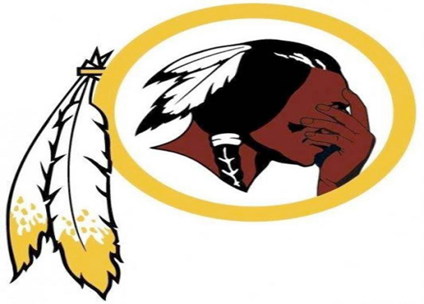The resignation of Rachel Dolezal as president of the Spokane, WA National Association of the Advancement of Colored People has dominated the news lately. Ms. Dolezal had been using a fake racial identity by leading a chapter of the largest advocacy group in the country for African Americans as a mixed race person even though her parents claim she is white.
Her masquerade resonates with American Indians. Since the conquering of American Indians, the USA has been “Playing Indian” in an attempt to soothe their collective guilt for the many atrocities they committed against Native people.
This journey of “Playing Indian” for the USA began with this country’s first act of disobedience-the Boston Tea Party where White people dressed up like Indians and dumped British tea in the Boston Harbor over a dispute about import taxes.
Ever since this tax rebellion, the USA has struggled with a dual identity regarding Native people. They despised our savageness but coveted our free spirit and human instincts. Should we exterminate them or include them? They tried both. Extermination did not work and neither did assimilation.
“Playing Indian” did work. We will take their traditions, cultures, languages and practices without their permission and make them work for us. That way we can have the best of the both worlds. We can keep Indians in their place yet claim we are really honoring them.
While not meant to be an exhaustive list of “Playing Indian” examples, here are some more modern samples of how our “The Land of Free and the Home of the Brave” remind Native people of their second class place in the created order.
• Dressing up like Indians during Halloween.
• Misappropriating Native cultural symbols as sports team mascots, logos and team descriptions.
• Stealing Native names, titles and designations without permission in the naming of roads, bridges, parks, towns, cities, counties and other environmental landmarks.
• Denigrating Native culture and identity by establishing stereotypes like the “Indian Princess” in media and marketing which demean Native women as sexual objects.
• Misusing Native sacred practices like sweat lodges, powwows and purification ceremonies for profit.
• Casting non-Indian actors and actresses in movie and television roles better suited for Native performers.
• Vandalizing Indian country by robbing sacred sites of cultural artifacts and irreplaceable spiritual objects for placement in museums.
Don’t be too rough on Rachel Dolezal. Her immersion into a false narrative of “Playing Black” continues a long family tradition of her own country’s version of “Playing Indian.” She found out the hard way how it feels to be a “Chief without any Indians.”





In 1990, the week of the first Gulf War, and the “Oka Crisis” in Canada, I drove across 95% of the continent. I started out on Vancouver Island, through Washington, Idaho, Montana, North Dakota, Minnesota, and Wisconsin, crossing at the Sault, and on through Ontario, Quebec and New Brunswick. One of the things I couldn’t help but be struck by was how much of this continent was Aboriginal/First Nations/Native American (pick your preferred term)…in name only. The place names were indigenous, but the ownership and populace weren’t. On the Canadian side were visible signs on reserves that I drove past, of solidarity with the Mohawk of Oka, in their desire to not relinquish traditional lands for a golf course that had been promised/sold by city council to a developer.
I don’t think I have to the right to be incensed about it. Not my birthright. But I think I have the right to feel more than a little let down by the *illusion* of bi-cultural collaboration, and the false fronts that we seem to have too many generations of practice at perfecting. I also have the right to feel very disappointed in the respopnses I’ve seen from some to the recent Truth and Reconciliation Commission report on residential schools ( http://www.trc.ca/websites/trcinstitution/index.php?p=3 ).
The Dolezal case is definitely a weird one. As I am quick to remind people in discussion, the NAACP is not a “club”, where only people having a certain characteristic are permitted to be a member. It is an *advocacy* group. Says so right in the name. So in one respect, anyone with a sincere motivation to work in support of the organization’s goals ought to be eligible to be a member and even part of the executive. Some kinds of folks may feel a lot stronger about the issues than others, because it applies directly to them and their familial experience. But that doesn’t preclude others from feeling similarly motivated. At the same time, as you point out, there is something a little icky when a minority advocacy group feels like it has been “taken over” or steered by the majority. I don’t know how else to describe it other than that it simply doesn’t feel right.